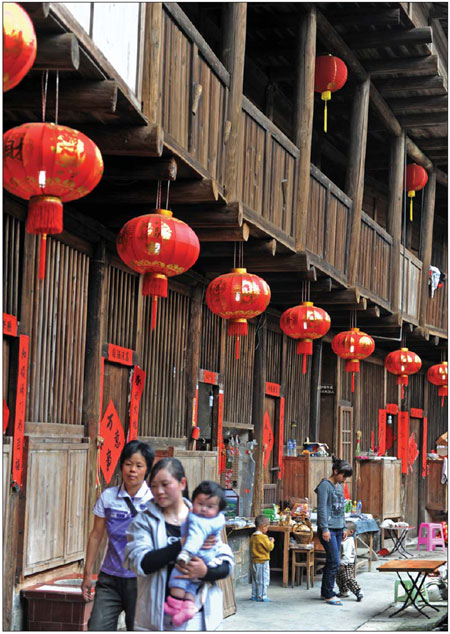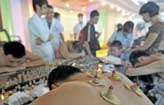Tips and Articles
Happy place
Updated: 2011-06-17 11:18
By Liu Xiaozhuo (China Daily European Weekly)
|
 The Fuzhou area has many earth towers, which were built by the Hakka people 1,000 years ago. Lin Liangbiao / for China Daily |
Visitors to the Fujian capital will quickly discover why the city is called 'region of happiness'
Lacquer work, stone sculpting and cork cutting are regarded as the "Three Treasures of Fuzhou? but the city is also famous for another valuable commodity ?its smart people. From the Tang Dynasty (AD 618-907) to the Qing Dynasty (1644-1911), thousands of jinshi (successful candidates in the highest imperial examinations) originated from this city in East China. A good education meant a good job, and a comfortable life so it's not surprising the city was called Fuzhou (happy region).
The city has always been an important trade port as well as a cultural center and is one of China's ancient cities, with a history of almost 7,000 years.
The capital city of Fujian province serves as the region's economic, political, cultural and transport center.
It is also called "banyan city", a name dating from the Song Dynasty (960-1279) when the governors called on people to plant banyan trees.
Because locals planted so many of them, the city is now covered in a leafy canopy. Thanks to the many shaded areas, Fuzhou women do not need to hold umbrellas to protect themselves against the harsh UV rays.
Fuzhou cuisine is famous for being light and as such, perfectly keeps the original flavor of the ingredients. The different soups of Fuzhou are a particular favorite and include seasonal vegetables and fresh seafood.

Specials

Turning up the heat
Traditional Chinese medicine using moxa, or mugwort herb, is once again becoming fashionable

Ciao, Yao
Yao Ming announced his retirement from basketball, staging an emotional end to a glorious career.

Financial sector short of talent
Lack of skilled professionals in Shanghai inhibiting the city's development as a financial hub